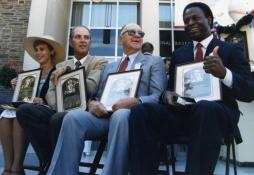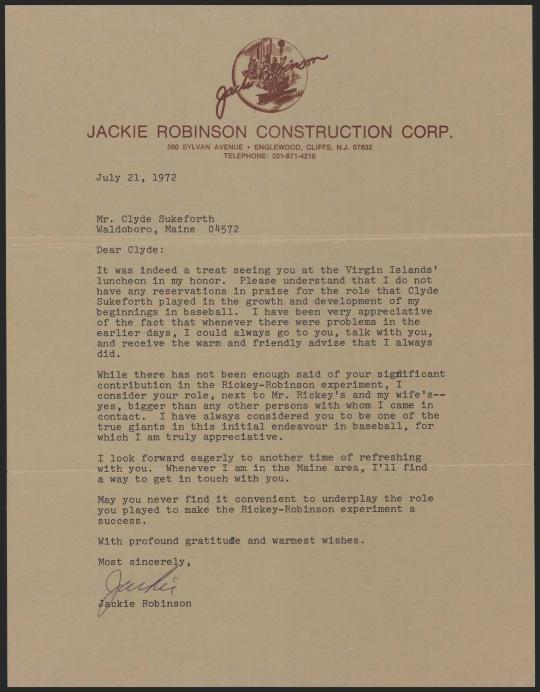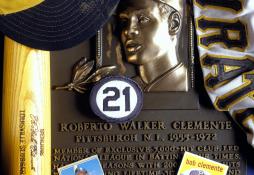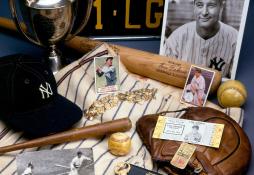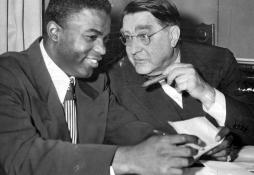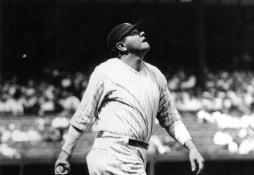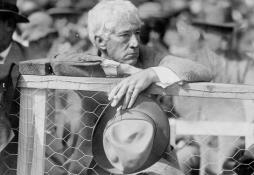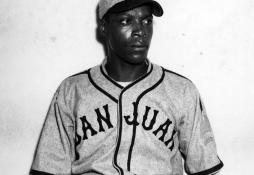- Home
- Our Stories
- #Shortstops: Letters from Jackie
#Shortstops: Letters from Jackie
Jackie Robinson was, for many, the most influential baseball player to ever swing a bat. His career, filled with stories of grit and perseverance, was greatly impacted by a lesser-known figure: Clyde Leroy Sukeforth.
Dodgers Gear
Represent the all-time greats and know your purchase plays a part in preserving baseball history.
Hall of Fame Membership
There is no simpler, and more essential, way to demonstrate your support than to sign on as a Museum Member.
Fans watching Robinson’s otherworldly skill in the Negro Leagues during the 1945 season surely recognized that he was talented enough to play in any league, regardless of level. But at the time, the American and National Leagues were still segregated, and the color of Robinson’s skin was more significant to many owners, scouts and managers than his talent.
But not to Sukeforth. In this letter, penned 16 years after Robinson’s playing career ended, Robinson thanks Sukeforth for taking a chance on him, emphasizing the significant role he had in his life. What exactly did Sukeforth do to be called a “true giant” in Robinson’s trajectory?
Sukeforth was around the game of baseball for years, first as a major league player then as a player-manager in the minors and then as a scout and assistant coach. As a scout under Brooklyn Dodgers president Branch Rickey, Sukeforth was instructed by Rickey to convince Robinson to meet with him.
The meeting happened in late August 1945 and Robinson would eventually sign a contract to play for the Dodgers’ top minor league team, the Montreal Royals, during the 1946 season. Sukeforth was the only person in the room with Robinson and Rickey.
Sukeforth and Robinson’s story doesn’t end there, though.
After Robinson excelled in the minors in 1946, compiling a .349 batting average and winning the league's Most Valuable Player Award, he signed a major league contract with the Dodgers before the 1947 season. At the start of the season, Sukeforth was the Dodgers interim manager after Leo Durocher was suspended.
On Opening Day – April 15, 1947 – Sukeforth started Robinson at first base, breaking the color barrier, the beginning of Robinson’s illustrious 10-year National League playing career. Sukeforth only managed Robinson’s first two games, both victories, before handing the reins off to Burt Shotton.
Sukeforth is famously included in Normal Rockwell’s “The Three Umpires” painting, which hangs at the National Baseball Hall of Fame and Museum in Cooperstown. Although Sukeforth’s managerial career was short-lived, his impact on Robinson and the game of baseball is cemented in history forever.
Manning Snyder was the 2023 licensing, sales and marketing intern in the Hall of Fame’s Frank and Peggy Steele Internship Program for Leadership Development
Related Stories
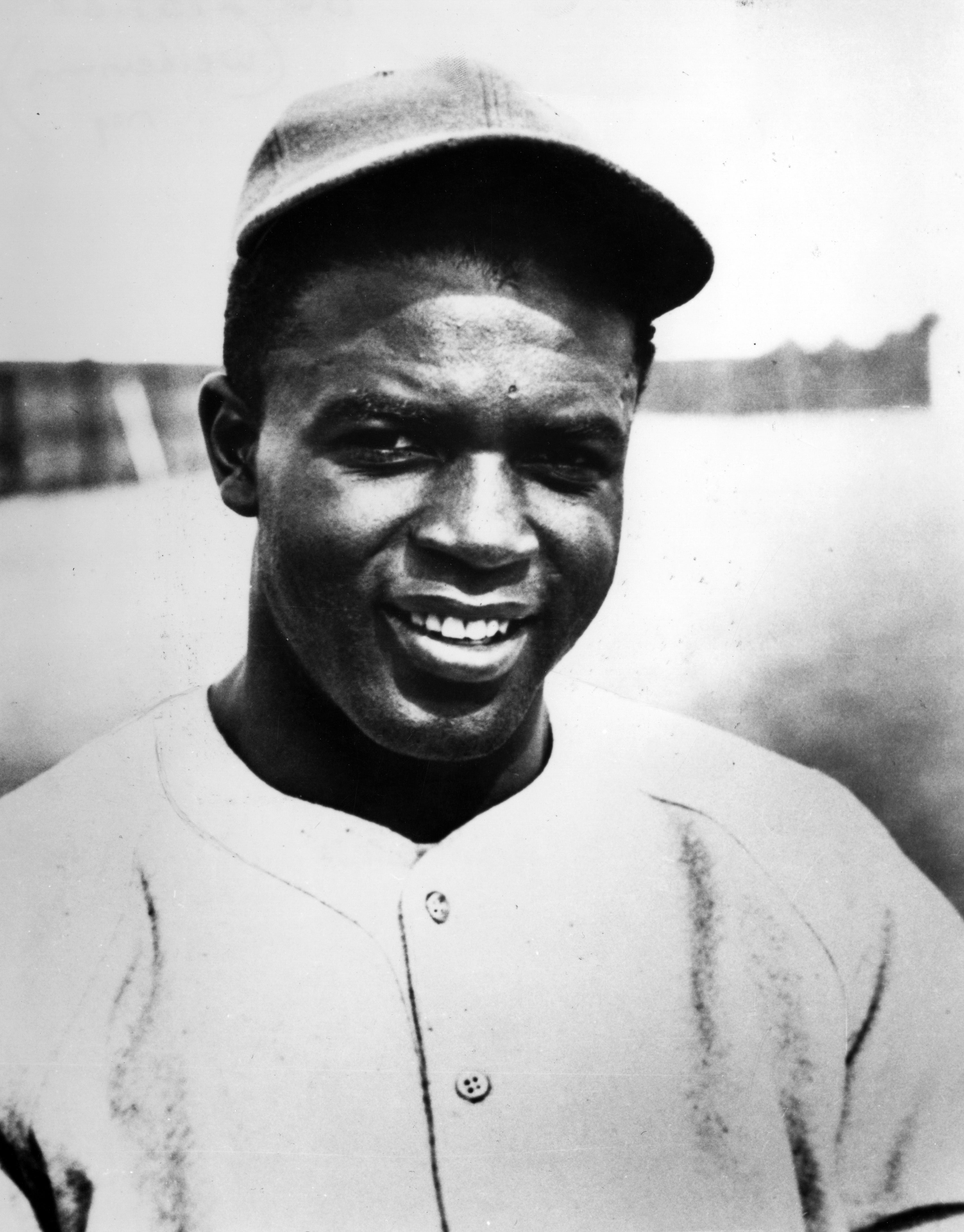
Jackie Robinson, circa 1946

Smith’s vision helped clear Jackie’s path to majors

#Shortstops: School yearbooks paint early picture of Jackie Robinson
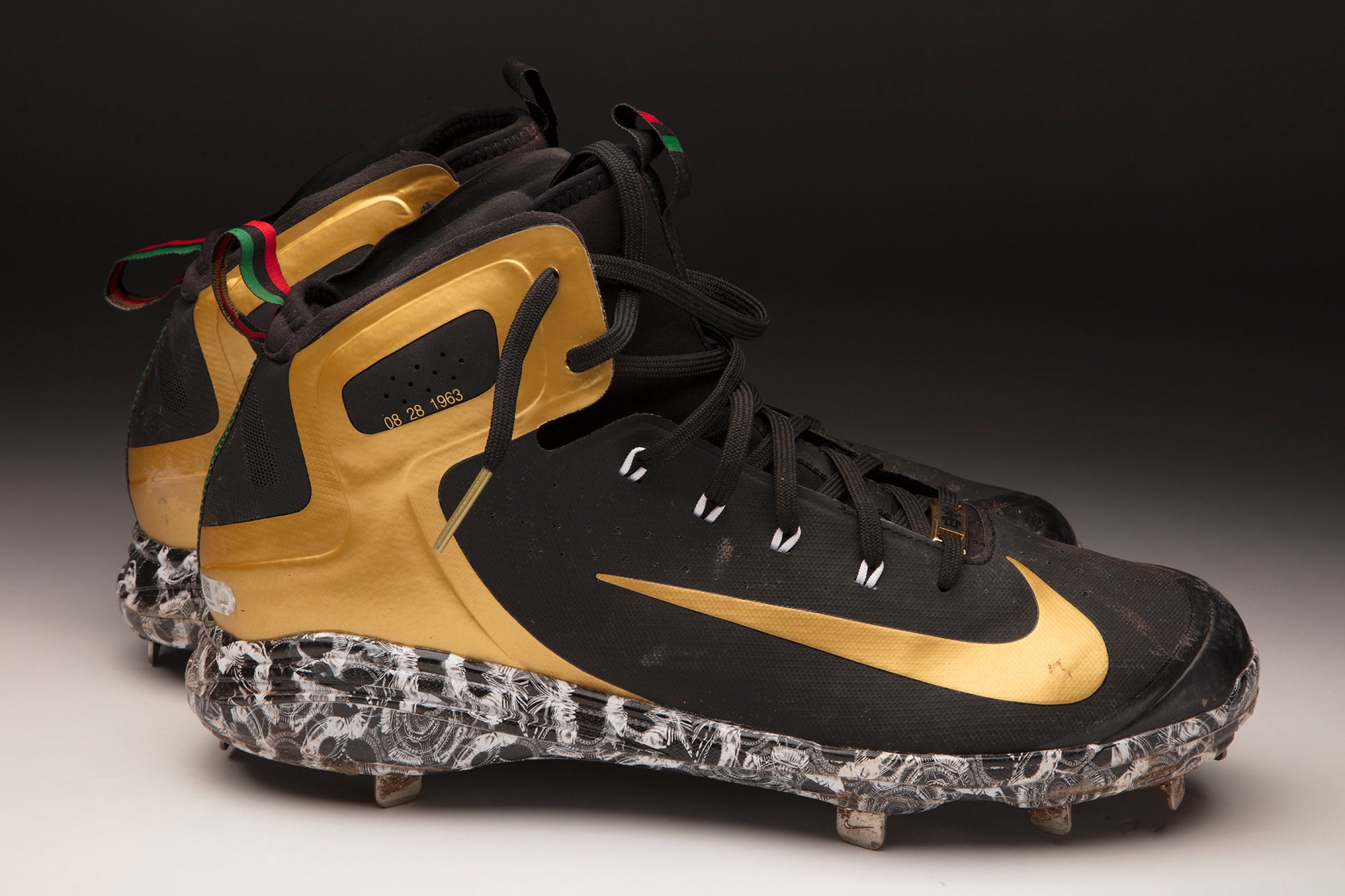
#Shortstops: Jones’ spikes celebrate Jackie’s legacy
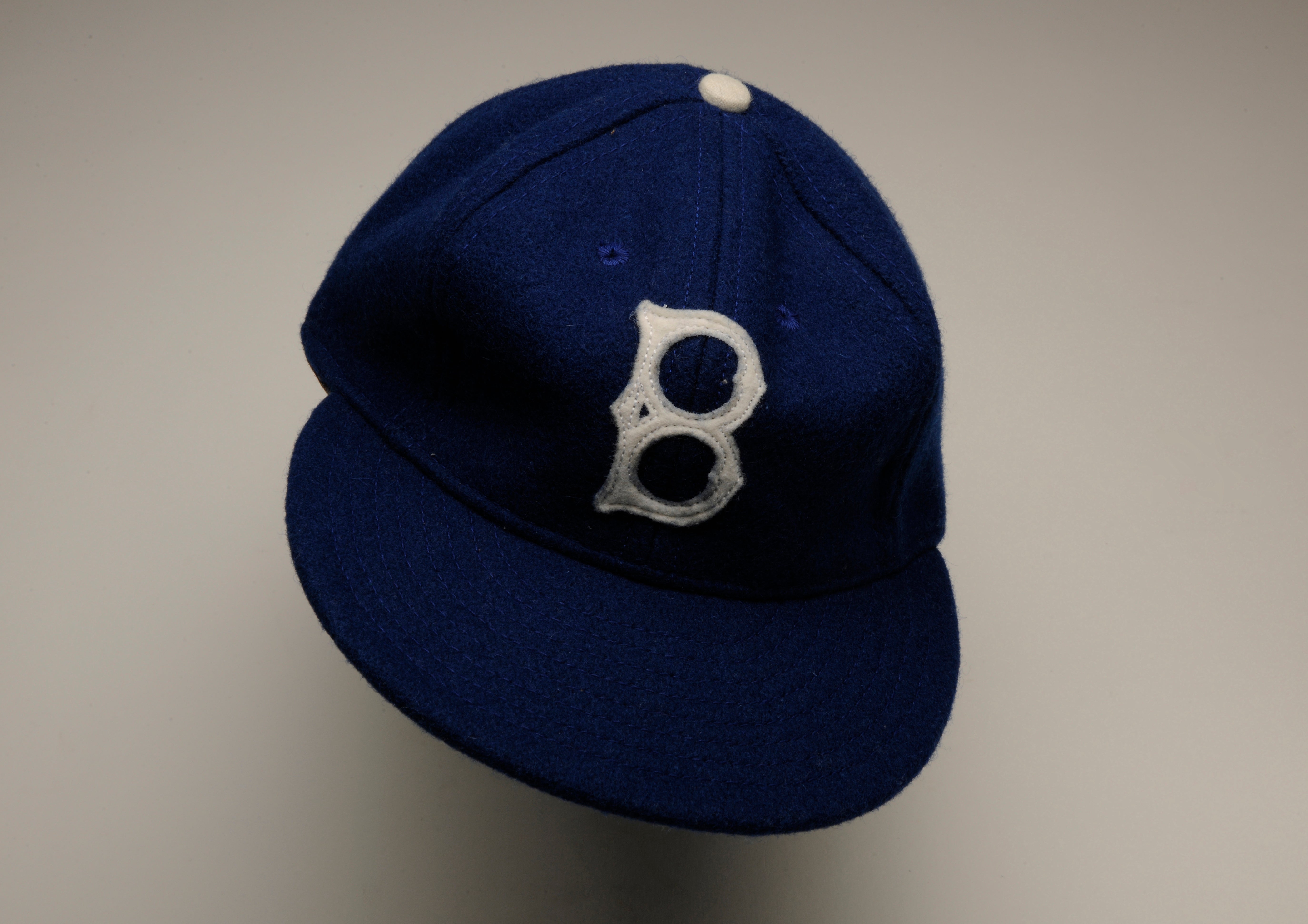
#Shortstops: The guts not to fight
Mentioned Hall of Famers
Related Stories
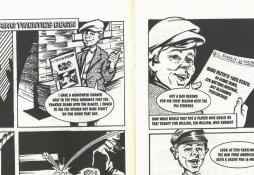
Baseball and the Funny Papers

He Never Complained

Fox-TV hoping for perfect Pitch

Opening Day, the Baseball Holiday

#Shortstops: The guts not to fight
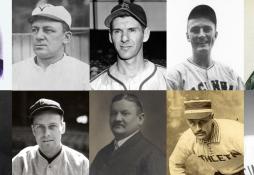
Ten Named To Pre-Integration Era Ballot for Baseball Hall of Fame Election
